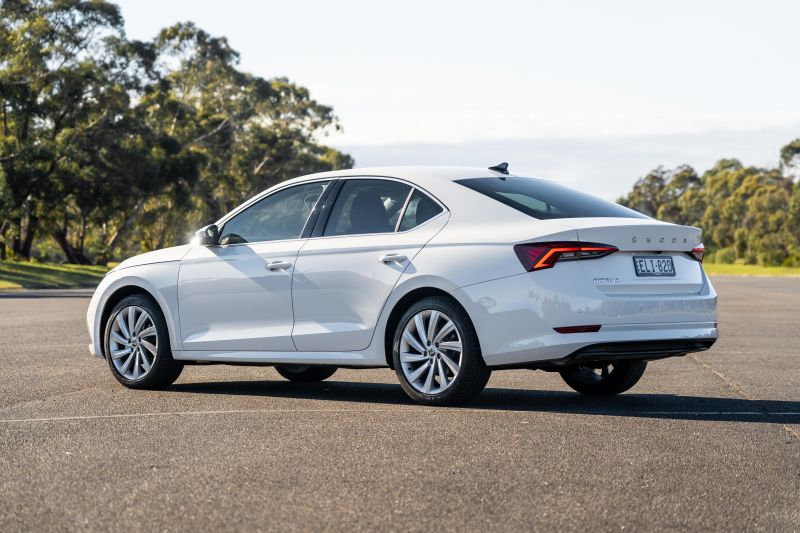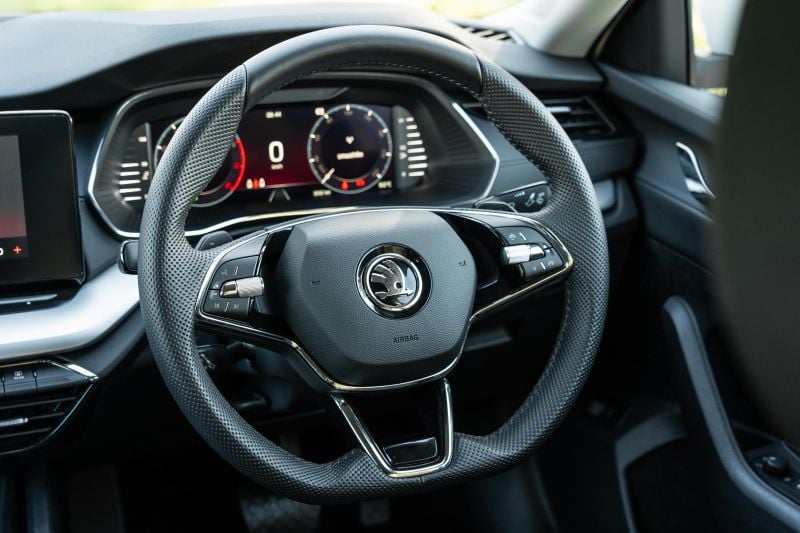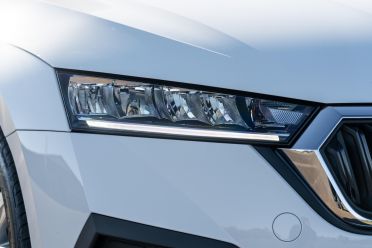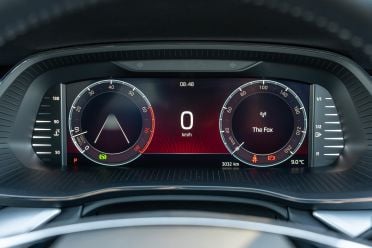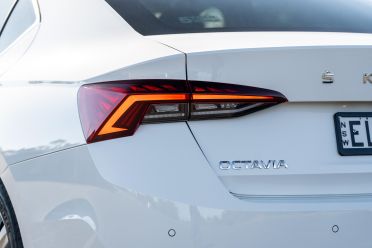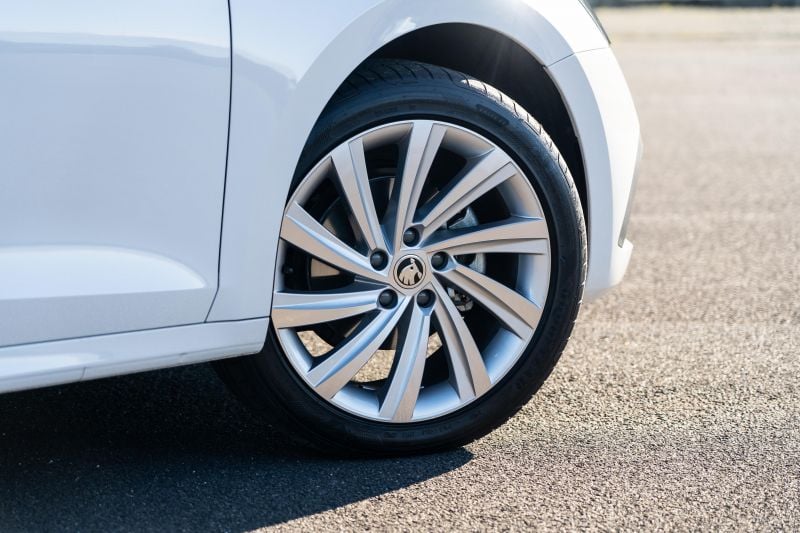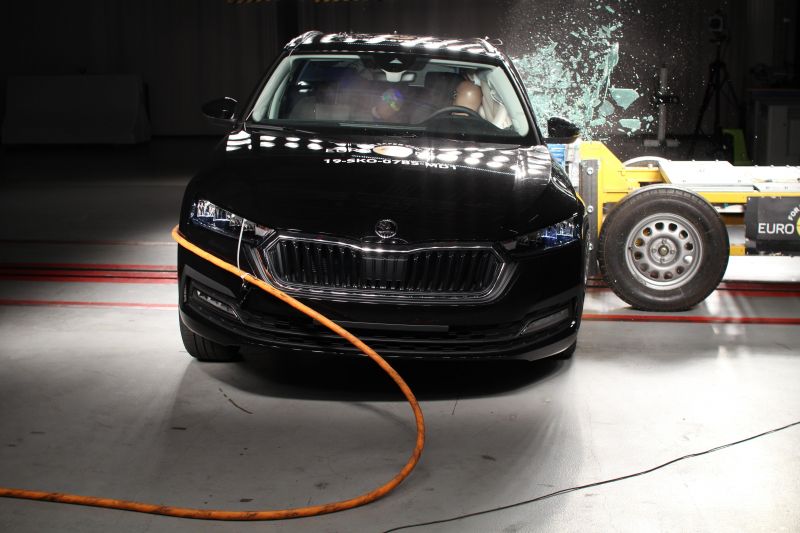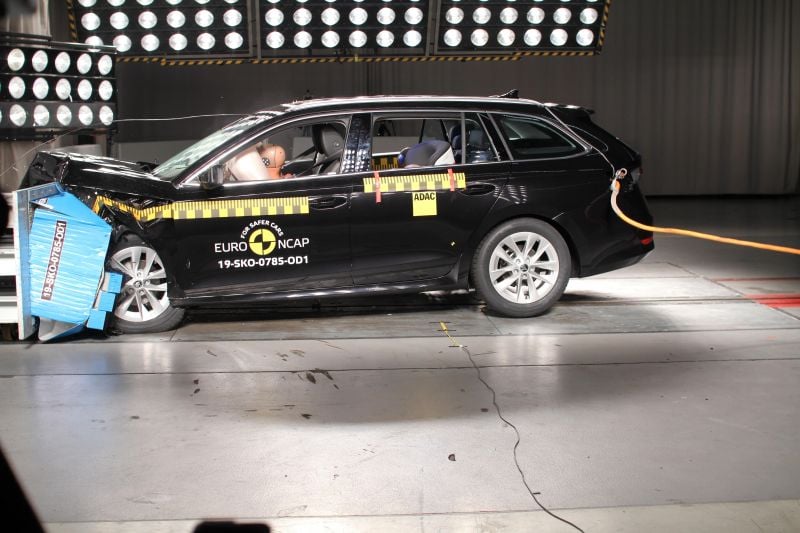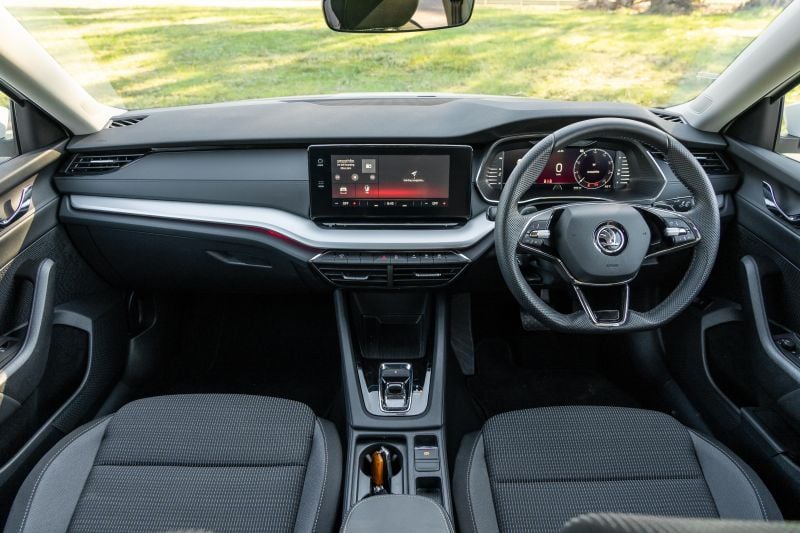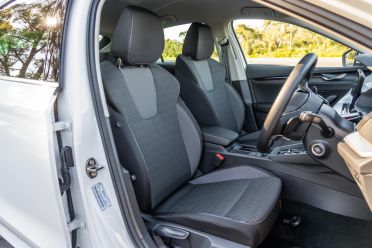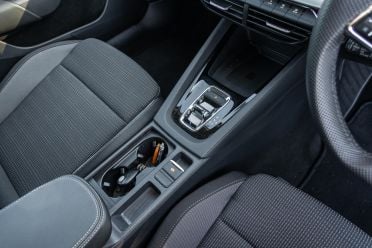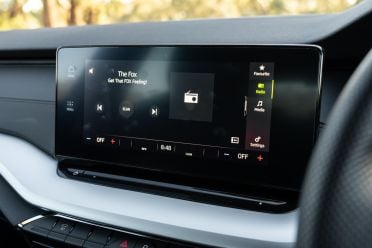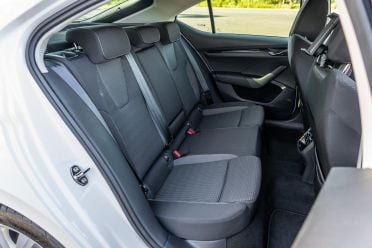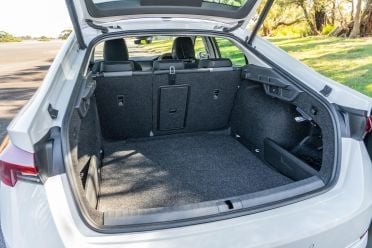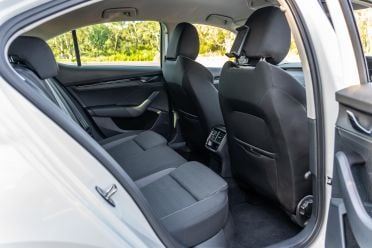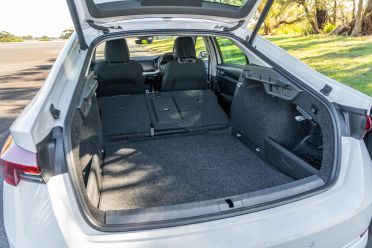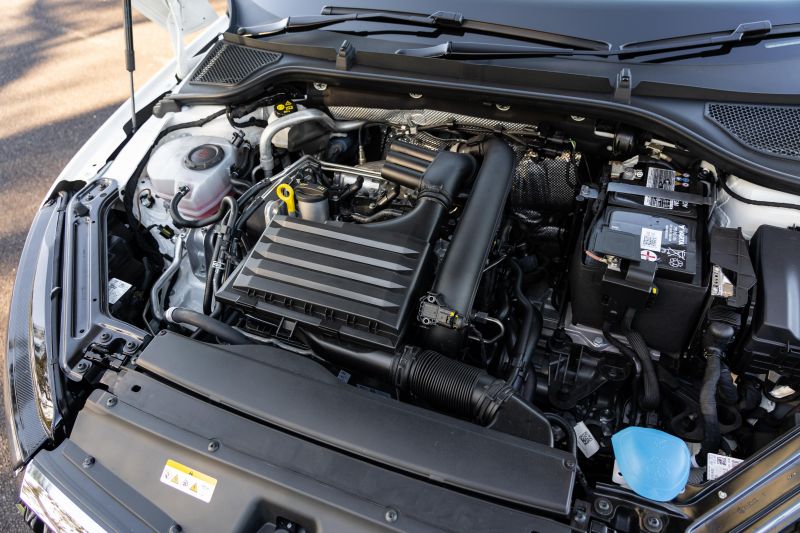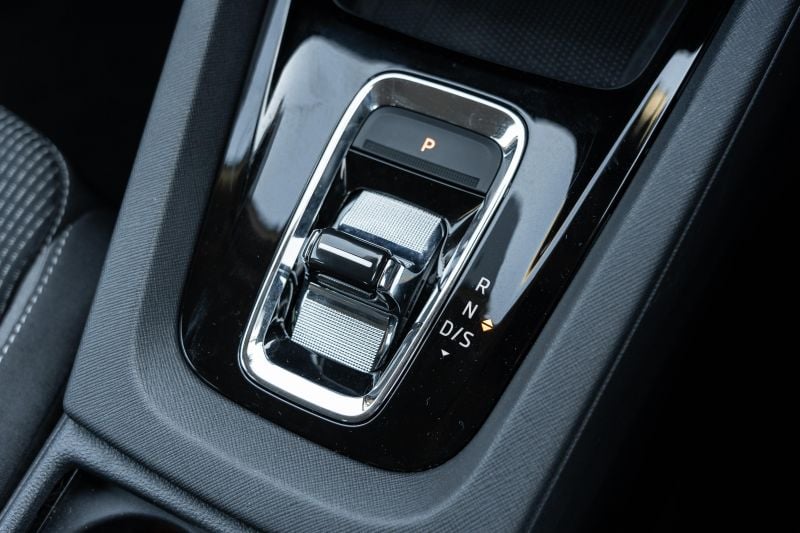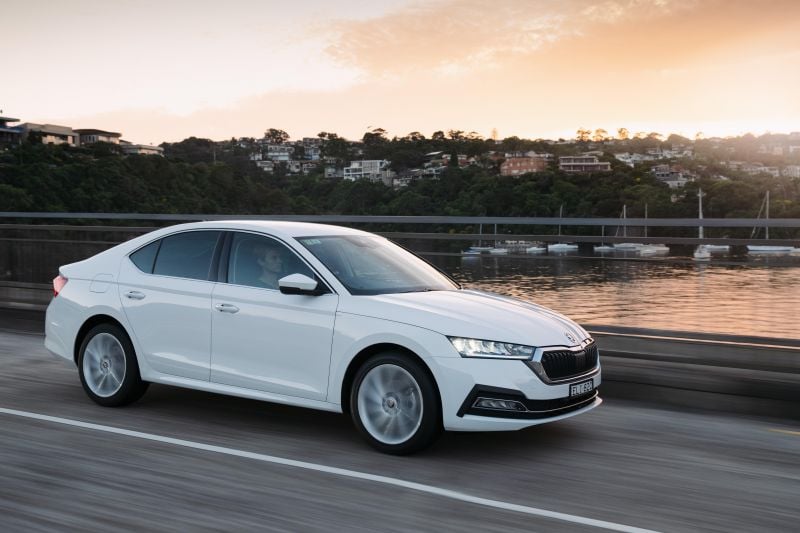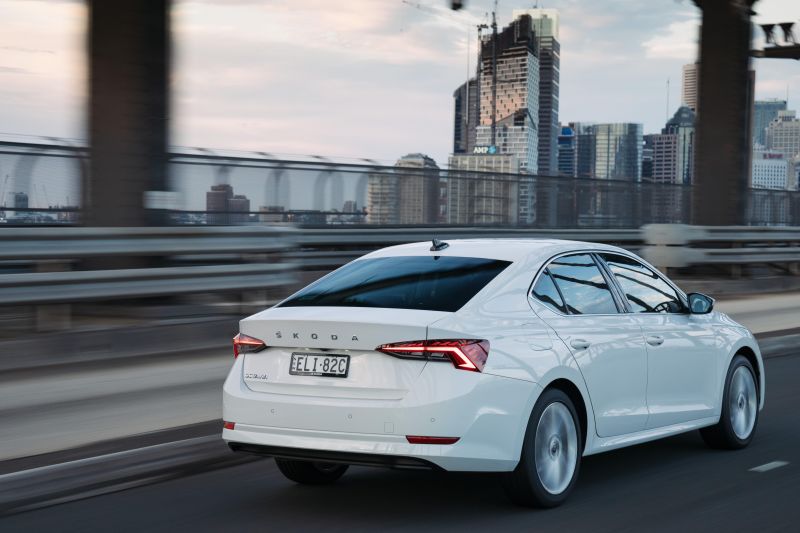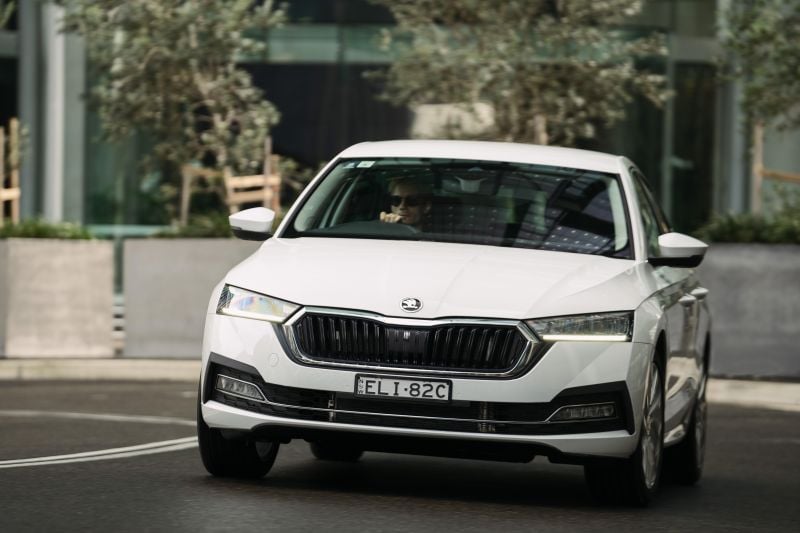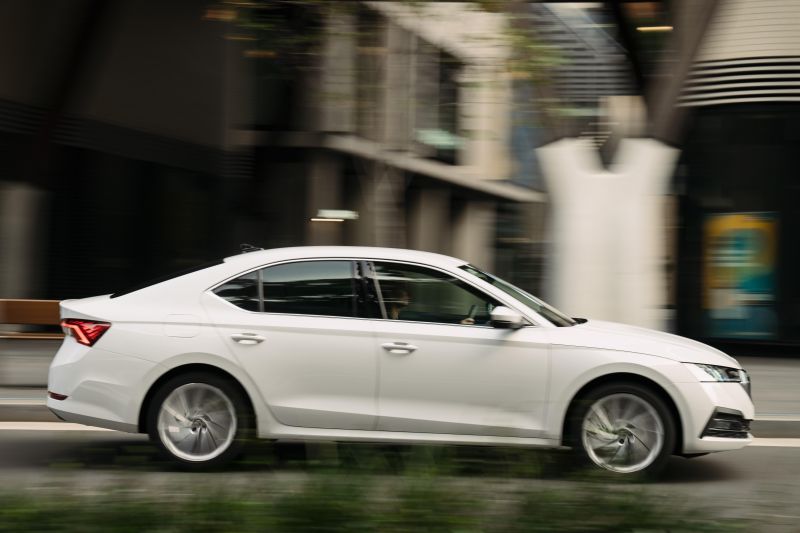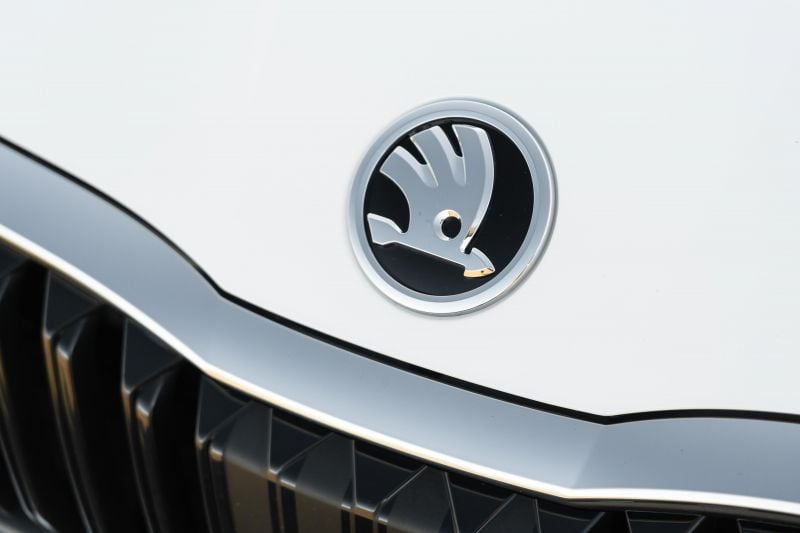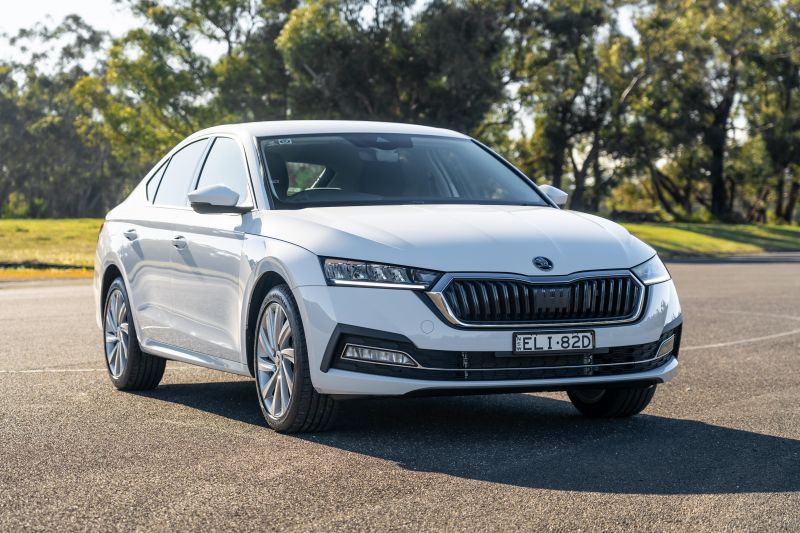While it’s still no household name in Australia, the Skoda Octavia has a legion of loyal followers in Europe, the UK, and other global markets.
Offering large-car space and small-car economy and dynamics in a medium-size package, Skoda’s segment-busting liftback and wagon are the embodiment of its ‘Simply Clever’ mantra.
The fourth-generation Octavia hit Australian showrooms in 2021 with even more space, technology and quality touches than before. The nameplate has been the Czech brand’s driving force in Australia, so while it competes in a dying segment it’s a critical model.
It sells in small numbers here. While it’s often a podium contender in parts of Europe, just over 1000 units have been delivered year-to-date (through September 30) in Australia, nearly one tenth the Toyota Camry’s volume over the same period.
Here we’re revisiting the entry-level 2022 Skoda Octavia 110TSI Ambition in liftback sedan form. While the specification hasn’t changed significantly for 2022, its price has climbed from a sharp $32,990 drive-away to $36,490 on the road.
The vehicle you see here sits between the base Camry Ascent petrol and the Ascent Hybrid, despite hailing from Europe and offering turbocharged performance.
Should this be on your family car shortlist? Time to find out.

How much does the Skoda Octavia 110TSI Ambition cost?
As noted above, our test car is the absolute base model and in solid white paint retails for the advertised $34,490 drive-away price.
It’s the bottom rung in a now four-variant family that comprises three different engine variants as well as two body styles.
See the full 2022 price list below:
- Skoda Octavia 110TSI Ambition Sedan: $36,490 D/A
- Skoda Octavia 110TSI Style Sedan: $38,990 D/A
- Skoda Octavia 140TSI Limited Edition Sedan: $50,490 D/A
- Skoda Octavia RS Sedan: $53,990 D/A
- Skoda Octavia 110TSI Ambition Wagon: $37,990 D/A
- Skoda Octavia 110TSI Style Wagon: $40,490 D/A
- Skoda Octavia 140TSI Limited Edition Wagon: $51,990 D/A
- Skoda Octavia RS Wagon: $55,490 D/A
All prices are drive-away.
Prices are up by nearly $4000 compared to when the new Octavia launched in April 2021, though for the extra spend you now get keyless entry.
The Medium Passenger class is not the sales hub it once was, but there are some pretty well-known nameplates the Octavia does battle with.
Key rivals include:
- Mazda 6 Sport: $34,590
- Toyota Camry Ascent: $30,990
- Volkswagen Golf Wagon 110TSI: $33,750
All prices exclude on-road costs
Even with the 2022 mark-up, the Octavia compares favourably with its rivals. The base Camry is $35,150 drive-away using a Melbourne postcode, while the Mazda 6 and Golf Wagon will have you closer to $40,000 on the road.
What do you get?
Equipment highlights for the Octavia Ambition include:
- 10-inch touchscreen infotainment system
- Apple CarPlay and Android Auto (wireless)
- 10.25-inch Virtual Cockpit (digital instruments)
- 18-inch alloy wheels
- Paddle shifters
- Privacy glass
- LED headlights (reflector-type)
- LED tail lights with dynamic indicators
- Ambient lighting
- Silver roof rails
- Rear centre armrest
- Dual USB-C ports
- Bluetooth phone connectivity
- Eight-speaker audio
- Power tailgate
- Push-button start
- Umbrella in driver’s door
- Foldable luggage hooks
- Two tablet holders
- Rain-sensing wipers
- Keyless entry (new for MY22)
That’s a pretty substantial spec sheet no matter which way you look at it, but if you want stuff like built-in satellite navigation and blind-spot monitoring you’ll have to step up to the 110TSI Style (from $36,990 D/A) – the latter also necessitates you spend $5800 on the Luxury Pack.
While the Camry’s base specification is pretty comparable, the Mazda 6 Sport comes standard with a head-up display and embedded navigation.
The entry-level Volkswagen Golf Wagon also comes equipped with a full suite of active safety features including blind-spot and rear cross-traffic assist, as well as Travel Assist (semi-autonomous highway mode) which the base Skoda lacks.
Is the Skoda Octavia 110TSI Ambition safe?
The Skoda Octavia line-up wears a five-star ANCAP safety rating based on tests carried out by Euro NCAP in 2019.
It scored 92 per cent for adult occupant protection, 88 per cent for child occupant protection, 73 per cent for vulnerable road user protection, and 79 per cent for safety assist.
Standard safety features across the range include:
- AEB with pedestrian/cyclist detection
- Multi-collision brake
- Lane-keep assist
- Reversing camera
- Rear parking sensors
- Tyre pressure monitoring
There are also eight airbags as standard (incl. driver’s knee and front-centre). Opting for the 140TSI and RS grades adds rear-side airbags for a total of 10.
Other features reserved for high-end models include:
- Adaptive lane assist (lane centring)
- Emergency Assist (safely stops car if driver is unresponsive)
- Traffic Jam Assist (adaptive cruise + lane guidance 0-60km/h)
- Passenger Protect Assist (closes windows and sunroof if collision detected)
- Matrix LED headlights (standard on 110TSI Style)
What is the Skoda Octavia 110TSI Ambition like on the inside?
Funnily enough, our loan of the Octavia Ambition coincided with our loan of the new Volkswagen Golf Wagon 110TSI Life – and boy has Skoda come a long way.
Despite Skoda long being regarded as the cheaper Volkswagen Group brand, the Octavia’s cabin looks and feels more upmarket than its Golf counterpart, from the cleaner design to higher ratio of soft-touch surfaces, as well as the seats.
I prefer the Octavia cabin fit-out, and in base guise it looks deserving of a much higher price tag.
Like the Golf it shares the bulk of its components with, the Octavia’s dash is dominated by two displays measuring 10.25-inches each. Without embedded navigation, the wireless Apple CarPlay and Android Auto connection will be your best friend.
There’s less gloss black surfaces and the Skoda is better for it; the screens and trims won’t be covered in fingerprints, and the Skoda skin of the MIB3 infotainment interface is understated and classy.
However, as we’ve mentioned in the Golf, the Octavia’s infotainment display is the central hub for a number of vehicle functions including ventilation, adding a step in the adjustment process that didn’t need to be there.
Further, it’s a distraction on the move because it requires more attention when operating – best to save it for when you stop at the lights. Otherwise, it’s a snappy system that gets better again in the Style with built-in navigation.
Ahead of the driver is the latest iteration of Skoda’s Virtual Cockpit, which like the infotainment system gets its own look and feel compared to similar displays in the Volkswagen Group family.
For me, it’s a slight step backwards as the older setup was much cleaner and offered more attractive layout options.
Storage and space up front is excellent. The lower section of the centre stack offers a wireless charging pad more than capable of holding a large phone, as well as twin USB-C ports, the door bins are huge and felt-lined with a small rubbish bin, and there’s a big cubby under the front-centre armrest.
The twin cupholders up front fit a little insert that can hold phones and keys, and there’s a slot for your key fob too.
Hop in the second row, and you’ll find more space than you get in most SUVs, as well as sedans from the class above. Even for 6’1-ish me there’s acres of leg and knee room, and headroom is good too. Two adults are more than catered for back there, maybe three at a pinch.
There’s directional air vents though not a separate zone of climate control like you get on the Golf or higher grades of Octavia, with other amenities including seatback pockets (with a device holder), a fold-down centre armrest with cup holders, and large door bins again lined with cloth.
As for the boot, it’s massive. There’s 600 litres with the rear seats up under the liftback tailgate, and 1555L with them folded – in a sedan! If that’s not enough, the wagon offers 640/1700L. In typical Skoda fashion there’s an array of luggage nets and hooks too.
While Skoda lists a ‘space saver spare’ as standard equipment, it’s actually a full-size steel spare under the boot floor. It came in handy after suffering a puncture…
What’s under the bonnet?
Power in 110TSI models comes from a 1.4-litre turbo petrol four, developing (you guessed it) 110kW (6000rpm) and 250Nm (1500-4000rpm).
It’s a familiar engine, carried over from the previous-generation model and shared with the related VW Golf, though new for this generation is the eight-speed torque converter automatic from Aisin.
The move is down to what the company says is an issue with Australia’s fuel and emissions standards, which means global production allocation of newer, cleaner engines like the 1.5 TSI used in the smaller Kamiq and Scala is prioritised for markets with strict regulations like Europe and the UK.
We miss out on the newer engine’s fuel saving cylinder-on-demand tech, the quicker and more efficient DSG dual-clutch automatic, and the petrol particulate filter fitted to EU-market models to catch harmful pollutants.
With that said, the 1.4 TSI is still a punchy and efficient motor, claiming a miserly 5.7L/100km combined fuel figure in sedan guise. By comparison, the Toyota Camry Hybrid uses a claimed 4.7L/100km, while the 2.5L petrol-only model uses a claimed 6.8L/100km combined.
The Octavia features idle stop/start tech as it did before, and requires 95 RON premium unleaded for its small-ish 45L tank. Skoda also claims a 9.0-second sprint from 0-100km/h.
How does the Skoda Octavia 110TSI Ambition drive?
As noted earlier, we had the Octavia Ambition and Golf Wagon Life during the same week, so I managed to drive these vehicles back-to-back.
More than ever, the Octavia doesn’t feel like a watered-down Volkswagen. Instead, it’s just about as polished as its German relative.
The 1.4 TSI and eight-speed auto combination does bring a change in character to the vehicle’s performance – though whether it’s better or worse is down to personal preference.
Effortless torque and a muted soundtrack mean refinement is still top-notch despite the drivetrain being a generation or so behind, and there have been improvements to low-speed drivability now you don’t have to wait for DSG clutches to link up as you set off.
It’s especially evident from a standstill, where there’s more immediacy to throttle response as the idle stop/start system fires up the engine and you hit the right pedal to get away from the lights.
However, I also sampled the newer 1.5 TSI and seven-speed DSG drivetrain in the smaller Skoda Scala hatchback a week or so prior, and still prefer the linearity and snappy gear shifts of the newer running gear.
One thing the Aisin-sourced eight-speeder doesn’t quite get right every time is the shift from first to second. At times it’s a little too eager to rev out and there’s a mild shunt from first to second, other times it shifts too early and doesn’t get you going as quickly as you’d like.
To be fair, it’s a trait I’ve experienced in many modern turbocharged vehicles, some with torque converter autos and some with dual-clutches, but given the refinement and linearity the latest Volkswagen drivetrains have to offer, as well as the improvements to real-world efficiency, I’d be inclined to pick the newer running gear if I had the choice.
For many it’s a much of a muchness, and the Octavia is well-matched to driving in the city as well as cruising on the highway. Humming away in eighth the 1.4-litre engine is sitting below 2000rpm with plenty of torque on tap for a quick overtake.
The ride and handling balance is typical Skoda, prioritising comfort without completely relinquishing engagement and body control. It has a soft, cushy ride even on the standard 18-inch wheels, and noise from wind and the tyres is pretty minimal – the Golf is a tad quieter on the move, though.
I’m a fan of the light, fluid steering feel which is a pretty common trait in most Volkswagen and Skoda products of late, though there seems to be slightly less feedback than in the Mk8 Golf.
That said, the Octavia corners confidently and doesn’t wallow about despite the softer suspension tune, and the torsion beam rear axle doesn’t really make for any noticeable disadvantages in normal driving.
The Octavia misses out on some of the IQ.Drive goodies included in all Golf variants, at least in Ambition spec. That means the adaptive cruise control doesn’t have adaptive lane guidance or Traffic Jam Assist functions, while blind-spot and rear cross-traffic assists are noticeably absent.
These features become available as you move further up the range, but it’s the area Skoda can’t match Volkswagen.
In operation, the adaptive cruise control works reliably, and the lane-keep assist keeps you from drifting out of your lane while also showing in the cluster when there’s dotted and solid lines.
Adaptive cruise is typically Volkswagen in that it reliably sticks to the set speed and is pretty intuitive when following a lead vehicle – not suddenly slamming on the brakes or leaving a massive gap. It does have a habit of slowing down to avoid undertaking though, which can be annoying in Australia where many motorists lack lane etiquette.
The absence of blind-spot monitoring is also felt, as the sedan roofline and long body can require a bit more care when merging with traffic or making gaps on the freeway to overtake. It’s a shame it’s not even offered as an option, given the Mazda 6, Toyota Camry and Golf all offer it as standard across the range.
All told, though, the Octavia is an impressively refined and effortless drive that is more than capable of doing urban duties as well as open-road touring.
How much does the Skoda Octavia 110TSI Ambition cost to run?
Like the wider Skoda range, the Octavia is backed by a five-year, unlimited-kilometre warranty.
Scheduled servicing is required every 12 months or 15,000km – whichever comes first. You can purchase pre-paid plans instead of paying as you go, with three years costing $800 and five years asking for $1400. Not bad at all.
As for fuel consumption, we saw an indicated 6.6L/100km over 548km of mixed driving skewed to highway conditions. The trip computer was indicating a further 310km of range – some 860km total in one tank – which is pretty darn good. It’s still 0.9L up on Skoda’s claim, though.
CarExpert’s Take on the Skoda Octavia 110TSI Ambition
Motoring journalists have long praised the Skoda Octavia and suggested it as a genuine alternative to in-vogue SUVs.
It offers more space for passengers and luggage than the likes of the Mazda CX-5 and Toyota RAV4, as well as being more efficient and agile to drive. But because of the body shape and badge, it’s far less likely to be considered.
The Skoda is more than deserving of being on your shopping list if you’re looking for a mid-sized family car.
For $35,000 on the road, there’s few alternatives that offer as well-rounded a package as the Octavia.
Click the images for the full gallery
MORE: Everything Skoda Octavia





